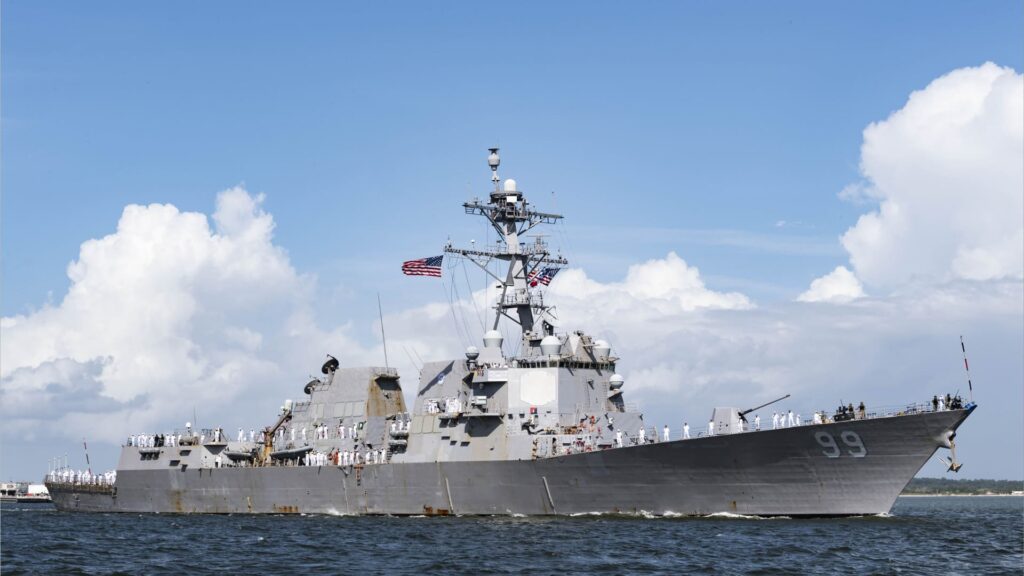In a world defined by rapidly shifting threats and rising tensions across key maritime corridors, the United States has taken a significant step toward enhancing its naval operational agility. During recent naval exercises off the coast of Virginia, the U.S. Navy demonstrated its ability to reload ship-based missile launchers at sea — and do it twice as fast as before. This is not just a technological breakthrough; it’s a clear message that naval strategy is adapting to the demands of a new era of conflict and global instability.
As part of Large Scale Exercise 2025, the destroyer USS Farragut and support ship SS Gopher State showcased advanced methods for reloading vertical launch systems (VLS), specifically the Mark 41 launchers, under real maritime conditions. Traditionally, reloading these systems required docking at a secure port — a process that could sideline warships for days. Now, with new at-sea rearming methods, downtime is reduced, and readiness is greatly improved.
The trial included two reloading methods: a conventional crane system positioned at the bow and a new modular “frame” system installed at the stern. The latter uses a structural assembly placed over the launcher cells, allowing cranes to deliver missile containers directly. This innovation enables the installation of two missiles per cycle instead of one — a significant boost in operational tempo.
The development of these technologies began in earnest in 2022 when then-Secretary of the Navy Carlos Del Toro called at-sea VLS reloading a “revolutionary” step for naval operations. Since then, progress has been swift. The TRAM system was tested aboard USS Chosin in 2023, paving the way for the enhanced model demonstrated in the latest drills — a system reminiscent of Leidos’ Speed Reloader concept, now transitioning from experimental to deployable.
This leap forward comes at a time when maritime competition is intensifying. Heightened naval activity in the Indo-Pacific, increased interference in shipping routes near the Horn of Africa, and rising strategic interest in the Arctic all demand fleets capable of sustained deployment without logistical withdrawal. The ability to replenish missile inventories at sea provides a critical edge in conflict scenarios where speed and adaptability can outweigh raw firepower.
What makes this development truly pivotal is its strategic impact. Naval forces are no longer merely platforms for power projection — they are becoming resilient, flexible combat units designed for continuous operation in high-threat environments. This change reflects a broader shift in defense thinking: readiness must now be measured not just in weaponry but in the ability to act quickly, anywhere, and for extended periods.
In an era of unpredictable flashpoints — from the South China Sea to the Red Sea — the U.S. Navy’s new reloading capability means less vulnerability, greater presence, and more immediate response options. It closes the critical “downtime gaps” that adversaries might otherwise exploit, particularly during prolonged missions or in contested waters.
Ultimately, this isn’t just about loading missiles faster. It’s about reimagining how modern navies operate in a world where agility, endurance, and real-time adaptability have become the true benchmarks of maritime superiority.



